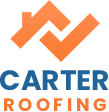Ridge Vents Explained: Active or Passive? What You Need to Know
Ridge vents are important for homes. They help keep the attic cool. This is important for the roof’s health. There are two types of ridge vents: active and passive. Both types help with ventilation, but in different ways. By the end, you will know which type of ridge vent is best for your home. Let’s dive in and learn more about ridge vents!

How Do Ridge Vents Work?
The core function of ridge vents is to enable ventilation. This process involves the movement of air into and out of the attic space. Proper ventilation helps to maintain a balanced temperature and moisture level, crucial for the overall health of the roof.
Installation Location
Ridge vents are strategically placed at the peak of the roof. Their position allows them to harness the natural rise of hot air. The small openings along the vent facilitate the movement of air, making them an effective component of the ventilation system.
Airflow Mechanics
Airflow in the attic works based on the principle that hot air rises. As the hot air in the attic rises, it escapes through the ridge vent. At the same time, cooler air enters the attic through other vents, such as soffit vents. This continuous exchange of air keeps the attic cool.
Importance of Airflow
Maintaining proper airflow in the attic is vital for preventing heat buildup. Excessive heat can damage roofing materials and increase cooling costs. Similarly, moisture control is essential to prevent mold growth and structural damage.
System Collaboration
Ridge vents are most effective when used in conjunction with other ventilation components. For instance, soffit vents allow cooler air to enter the attic, which then gets heated and rises to exit through the ridge vent, creating a continuous cycle of air movement.
Active Ridge Vents
Active ridge vents incorporate a power source, typically an electric or solar-powered fan, to enhance air movement. This additional force helps to expel hot air more efficiently than natural convection alone.
Effectiveness
In regions with high temperatures, active ridge vents are particularly beneficial. The powered fan can significantly reduce attic temperatures, making the home’s overall cooling system more efficient and potentially lowering energy bills.
Collaboration
Active ridge vents can be used in combination with passive vents and other ventilation systems to maximize airflow. This collaboration ensures that the attic remains cool and well-ventilated, regardless of external temperatures.
Cost and Maintenance
While active ridge vents are more effective in certain climates, they do come with higher initial costs and ongoing maintenance requirements. Ensuring the power source remains functional and the fan is free from obstructions is necessary for optimal performance.
Performance
For homeowners in hot climates, the enhanced performance of active ridge vents can provide a significant improvement in attic ventilation. This can lead to a cooler home and potentially extend the lifespan of the roofing materials.
Passive Ridge Vents
Passive ridge vents rely on the natural movement of air to function. They use the principle of convection, where hot air naturally rises and exits through the ridge vent, while cooler air enters through lower vents, like soffit vents.
Convection Process
The process of convection in passive ridge vents is simple yet effective. As the attic heats up, the warmer air rises to the top and escapes through the ridge vent. This natural airflow requires no additional power source, making passive vents low maintenance.
Simplicity and Cost
One of the main advantages of passive ridge vents is their simplicity. They have no moving parts and do not require electricity, making them less expensive to install and maintain. This can be a cost-effective solution for many homeowners.
Climate Suitability
Passive ridge vents are most effective in moderate climates, where natural airflow is sufficient to maintain proper attic ventilation. In extremely hot climates, passive vents may not provide adequate ventilation compared to their active counterparts.
Effectiveness
Despite their simplicity, passive ridge vents are highly effective in providing continuous ventilation. They work seamlessly with other ventilation components to ensure a well-ventilated attic space.
Choosing the Right Ridge Vent
When choosing a ridge vent, it is important to consider the local climate. Active ridge vents are more suitable for hot climates as they can provide enhanced ventilation. In contrast, passive ridge vents are ideal for moderate climates where natural airflow is sufficient.
Ventilation Needs
Assessing the specific ventilation needs of your home is crucial. Homes with larger attics or those in areas with higher temperatures may benefit more from active ridge vents, while smaller attics in moderate climates might be well-served by passive vents.
Cost and Maintenance
Consider the initial cost and ongoing maintenance requirements of both types of ridge vents. Active vents have higher upfront costs and require regular maintenance, while passive vents are less expensive and need minimal upkeep.
Installation
The installation of ridge vents should be done by professionals to ensure they are properly integrated into the roofing system. Proper installation is key to the effectiveness of both active and passive ridge vents.
Long-term Benefits
Proper attic ventilation provided by ridge vents can extend the lifespan of the roofing materials, reduce energy costs, and prevent issues related to moisture buildup. Choosing the right type of ridge vent for your home can provide significant long-term benefits.
Ridge vents are important for home ventilation. They help keep the attic cool and dry. This is important for the health of the roof. There are two types of ridge vents: active and passive. Active ridge vents use a power source to help move air. Passive ridge vents rely on natural air flow. Both types can be effective. Choosing the right ridge vent depends on your home and climate. It is important to choose the right type for your home. Proper ventilation is key to a healthy roofing system.




